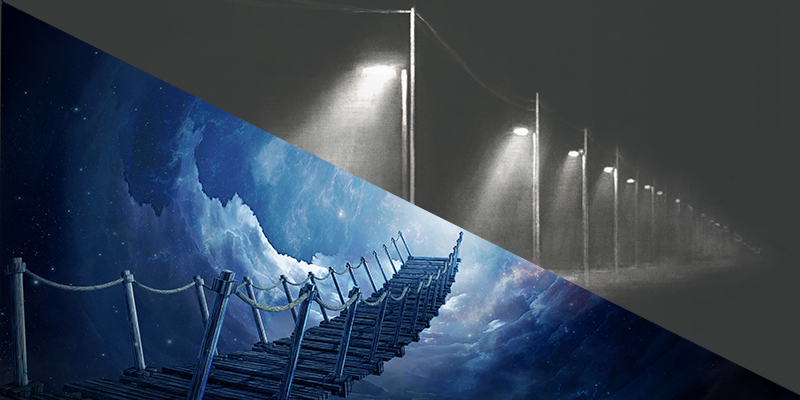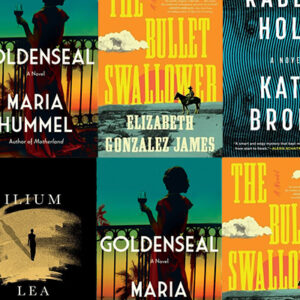When the initial idea for These Deadly Prophecies was born, I had no idea how to go about penning a murder mystery.
This was a tad bit of a problem, since These Deadly Prophecies is, at its core, a whodunnit. A particularly bloody one, even! And here I was, its author, utterly unqualified for the position, with not a single hardboiled detective story on my writerly resume.
Let me take a moment to rewind. I was—and am—first and foremost an author of young adult fantasy and science fiction novels, by trade. I was a genre writer, but not the Agatha Christie or Dorothy L. Sayers sort. I’d read a handful of whodunnits, and consumed my fair share of TV procedurals, but never dared attempt to create detective fiction of my own. I’d always been intimidated by the prospect.
Still, I couldn’t deny that I loved the tight pacing and rollercoaster plot structure of a well-crafted mystery—a fact that struck me particularly hard as my agent Thao and I enthused over how much we’d loved Rian Johnson’s Knives Out. I’d fallen hard for Ana de Armas and Chris Evans’ magnetic chemistry as earnestly clever Marta and charmingly louche Ransom, and so had Thao—who, as good agents do, was egging me on to put what I loved into what I was writing.
Which, in this case, meant taking a stab (ha ha) at crafting my own harrowing little murder mystery—complete with my own tension-ridden yet frustratingly charming leads, neither of whom can quite figure out whether the other might be a cold-blooded killer.
The idea was intoxicating. It was also, at the time, terrifying. I wasn’t at all sure I could pull it off. Hard-boiled detective fiction was a far cry from the cybernetic dragons and fantastical court intrigue I was used to writing.
“You could still add magic to the book,” Thao had generously suggested. “A fantasy novel can also be a murder mystery.”
It was an intriguing idea. I’ve always loved genre mashups, whether it’s a steamy romance in a space opera, or a classic heist plot set against a cyberpunk backdrop. I agreed to give it a go. Which, in short order, led me to my next task: figuring out how the introduction of the supernatural would change up the structure of events in a standard murder mystery.
Here’s the neat thing about mashing up speculative fiction with more classical genres like whodunnits. Speculative elements—like, as a totally random and non-specific example, the ability of a murder victim to foretell their own murder—adds a twist to the traditional pieces of the whodunnit puzzle, without necessarily compromising the classic whodunnit structure we all know and love. We still have our red herrings, our shady suspects, our trail of clues. We just also have magic powers.
The trick, for me, was finding the balance. I needed my speculative elements to complicate the whodunnit puzzle without destroying the puzzle entirely. There’s no fun to a murder mystery if the detective is an all-powerful wizard who can just wave a wand and figure out who the killer is. Magic needs limitations too —and it needs to follow the rules of the world-building that have been fashioned around the mystery.
In the world of These Deadly Prophecies, sorcerers operate three different types of magic: the power to create illusions, the power to physically manipulate objects, and the power to foretell the future. Without spoiling the plot of the book, all three types of magic play a role in the murder that drives the plot of the novel.
And ultimately, this specific whodunnit puzzle wouldn’t work without the existence of those magical elements. That, I eventually discovered, was the surest way to blend the fantasy elements I already so loved with the detective story I aspired to tell: not by constructing a whodunnit that worked in spite of the fantasy setting, but by constructing a whodunnit that was informed by the fantasy setting. In short, my book, at its best, needed to be a murder mystery that couldn’t be plotted or solved without its fantastical aspects, and simultaneously, a fantasy novel that wouldn’t work without the murder mystery at its heart.
These Deadly Prophecies is a modern day fantasy novel, through and through. It’s also a piece of modern detective fiction. The process through which I churned out a story that fits the criteria for both of these things was experimental, occasionally hilarious, and occasionally harrowing—but at all times, it was fascinating, it was fulfilling, and I wouldn’t have done Prophecies any other way.
And I feel so very privileged, now, to gift Prophecies to all of you. May it—with luck and hope!—live up to the expectations of mystery lovers and fantasy lovers alike.
***


















